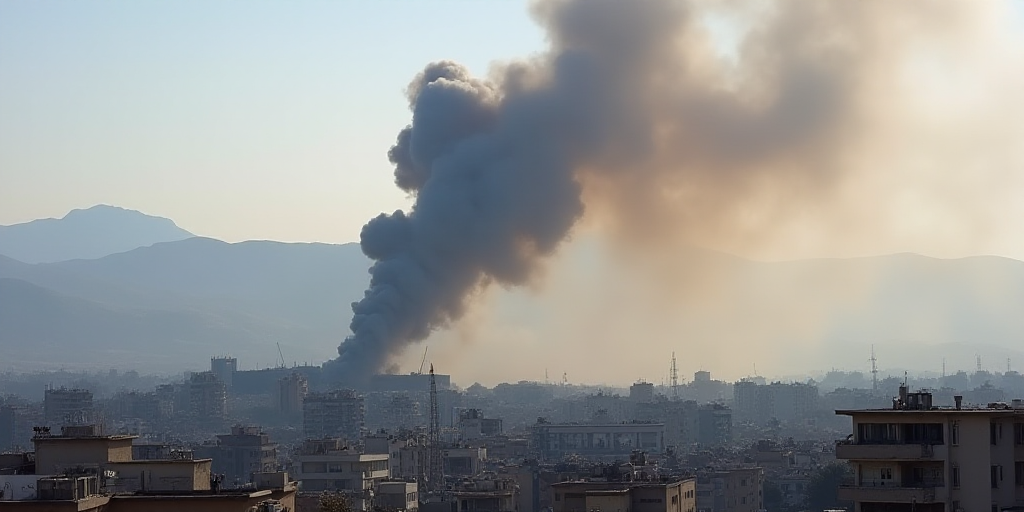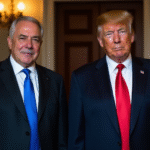Key Nuclear Sites in Iran
Iran’s nuclear program is dispersed across numerous locations. Despite the looming threat of Israeli airstrikes for decades, only some sites have been built underground. These key facilities include Natanz, Fordow, Isfahan, Khondab, Tehran’s Research Center, and Busher.
Iran’s Nuclear Program: Weapons or Peaceful Purposes?
The United States and the UN nuclear watchdog, the International Atomic Energy Agency (IAEA), believe that Iran had a coordinated and secret nuclear weapons program that was halted in 2003. Iran denies ever having such a program or intending to develop one.
Iran agreed to restrictions on its nuclear activities in exchange for relief from international sanctions under a 2015 deal with global powers. However, the agreement unraveled when then-US President Donald Trump withdrew the US from the pact in 2018, prompting Iran to gradually abandon restrictions the following year.
Iran’s Uranium Enrichment Expansion
Yes, Iran has been expanding its uranium enrichment program since the deal’s collapse. This reduction in “breakout time”—the period needed to produce enough highly-enriched uranium for a nuclear weapon—is now down to days or just over a week, compared to at least a year under the 2015 agreement.
While creating a bomb with this material would take longer, the exact duration remains unclear and subject to debate. Iran is enriching uranium to 60% purity in two facilities and theoretically has enough material at that level for six bombs, according to the IAEA’s criteria.
Natanz
Benjamin Netanyahu, Israel’s Prime Minister, announced on Friday that Israel had attacked Natanz as part of its operation.
Natanz is a complex located at the heart of Iran’s enrichment program, nestled in a plain adjacent to mountains near the Shiite Muslim holy city of Qom, south of Tehran. It houses two enrichment plants: the massive underground Fuel Enrichment Plant (FEP) and the Pilot Fuel Enrichment Plant (PFEP).
In 2002, an Iranian opposition group in exile revealed that Iran was secretly building Natanz, sparking a diplomatic standoff with the West over its nuclear intentions that continues today.
The FEP was designed for commercial-scale enrichment, with a capacity to hold 50,000 centrifuges. Currently, it has about 16,000 installed, with 13,000 operational, refining uranium to 5% purity.
Diplomats familiar with Natanz describe the FEP as a three-underground-plant facility. There have been debates about potential damage from Israeli airstrikes for years. Damage to FEP centrifuges has occurred through other means, including an explosion and a power cut in April 2021, which Iran attributes to Israel.
The PFEP, located above ground, only houses a few hundred centrifuges but enriches uranium to 60% purity.
Fordow
Located opposite Qom, Fordow is an enrichment center carved into a mountain, likely better protected against potential bombardments than the PFEP.
“A full load of BOMBS was delivered to the primary site, Fordow,” US President Donald Trump stated on social media after the attacks. “Fordow is gone.”
The 2015 agreement with major powers did not allow Iran to enrich in Fordow at all. Now, it operates around 2,000 centrifuges there, mostly advanced IR-6 models, with up to 350 enriching uranium to 60%.
In 2009, the US, UK, and France announced that Iran had been secretly building Fordow for years without informing the IAEA. Then-US President Barack Obama stated, “The size and configuration of this facility are inconsistent with a peaceful program.”
Isfahan
Iran has a significant nuclear technology center outside its second-largest city, Isfahan.
It includes the Fuel Plate Fabrication Plant (FPFP) and the Uranium Conversion Facility (UCF), which can process uranium into uranium hexafluoride for centrifuges.
Iran also stores enriched uranium in Isfahan, according to diplomats. Equipment for producing uranium metal exists there, a process especially sensitive from a proliferation perspective as it can be used to design a nuclear bomb core.
The IAEA has reported machines for centrifuge parts manufacturing in Isfahan, describing it as a “new site” in 2022.
Khondab
Iran possesses a partially built heavy water research reactor, originally named Arak and now called Khondab.
Heavy water reactors pose a nuclear proliferation risk because they can easily produce plutonium, like enriched uranium, which can be used to build the core of an atomic bomb.
Under the 2015 agreement, construction stopped, the reactor core was removed, and it was filled with concrete to render it inoperable. The reactor was supposed to be redesigned “to minimize plutonium production and not produce weapons-grade plutonium under normal operating conditions.”
Iran has informed the IAEA that it plans to activate the reactor in 2026.
Tehran’s Research Center
Iran’s nuclear research facilities in Tehran include a research reactor.
Busher
Iran’s only operational nuclear power plant, located on the Gulf coast, uses Russian fuel that Russia recovers when spent, reducing proliferation risks.






